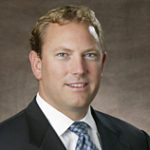
William E. (Bill) Younkes is President and CEO of Medical Simulation Corporation (MSC), the recognized healthcare industry leader in full-service simulation training, education, and consulting services to hospital personnel, medical product manufacturers, and medical societies. Bill has more than 25 years of management experience in the development of emerging technologies and early stage companies. He served in a management capacity at Baxter Travenol, where he led the development and commercialization of the company's I.V. pharmaceutical delivery business. Following his tenure at Baxter, Bill served as CEO of several venture capital-funded start-ups, raising over $120 million in financing. He is married and has triplets, two girls and a boy, who just graduated high school. A resident of Denver, Bill enjoys skiing in the mountains of Colorado. He has also been an avid pilot since college, and enjoys flying both his American Champion Decathlon and Cessna 340.
Interview by Deborah Lazaroff
Based on your experiences, what are the key leadership traits needed to build a company like MSC?
One is having a vision of where you want the organization to go. Another is an indepth understanding of the marketplace and the products you believe need to be in that marketplace; this is even more important in emerging companies and markets than in well-developed companies and markets. You must have a fundamental understanding of economics and the future benefits of the product or service you plan to enter in the marketplace. Leading-edge companies often find that their target industry may not even understand that they have a certain need because they’re used to doing things the way they always have with the same tools they’ve always used. Any new tool will probably add more costs to the system, so the idea needs to demonstrate that it can return greater value. I believe the key leadership skill the entrepreneur must have is to fully understand where the idea, concept, product or service fits into the intended market and adds substantial value.
That also means having a good understanding of existing needs that ought to be filled; as you mentioned, needs that perhaps even the marketplace doesn’t yet recognize.
That’s correct. Absolutely.
What is your vision for MSC as you move forward?
MSC is a healthcare-based company. The United States probably has, without exception, the broadest collection of healthcare technologies in the world. People travel here to get healthcare. But there are two significant challenges in our country: first, there are other countries with good healthcare systems, and when you look at their healthcare costs, some of them are half the healthcare costs of the United States; so we have a cost problem. You want the best care, but you also want it at a reasonable price. Second—and the second is more disturbing,—the outcome of care is not uniform across the USA. Two different hospitals can have significantly different patient outcomes. And you won’t know that until afterwards, when you didn’t get the outcome you expected; or worse, there’s a patient fatality that could have been avoided if the hospital had delivered the best demonstrated practices. We are a company that enables hospitals and medical device manufacturers to ensure their products and services achieve the best-demonstrated outcomes at the lowest effective cost. We’re part of their patient continuum of care because we’re a process-improvement company. Unlike a manufacturing company that makes cars, TVs or iPhones, hospitals don’t have a process control department because they don’t consider what they do to be a process like an assembly line. But healthcare is very standardized, and you can manage healthcare and procedures in a far more standardized way. MSC gives hospitals the capability to have uniform standards across the patient continuum of care. For medical device manufacturers, we do it within the selling process—we help them to show their product in the most favorable and cost-effective light to physicians and their clinical teams. So our process is more value-added than just selling the device’s capabilities.
So what you’re doing is providing efficient systems overall because the existing system really lacks consistency in the delivery of both quality and quantity of care.
Correct. There’s poor repeatability of the best treatment standards. Repeatability is a problem in many hospitals, but some hospitals routinely provide poor care at a high cost.
And unless these problems are fixed, the system will collapse.
Yes. The Affordable Care Act of 2010 is very controversial in terms of its impact on the whole healthcare industry. There are several different components to it. The component that we all agree upon is that the quality of healthcare needs to improve; it needs to become more uniform, and to provide greater access for all people. Whether you’re poor or you’re rich, you need to have access to the best healthcare. And, of course, we all agree that costs have to come down. The industry needs to prove itself just like the manufacturing industry did during the early 20th century, when automobiles became more than just novelties of the rich after Henry Ford found a way to mass-produce them. They became products available to the average person.
Access to care continues to be one of the major problems in the American healthcare system, one that single-payer systems don’t have. How has that affected how you do business?
The insurance industry certainly is a major factor in what needs to change, but I believe that by and large it’s consumers who must decide what they want in their basket of care. In the Affordable Care Act there are some requirements that you’re forced to purchase whether you want them or not, because they’re priced into the system. What’s happened is that the insurance industry has allowed us to become a bit numb to what we’re paying. That’s something that started back in World War II, when companies began offering health insurance as a benefit because they were unable to raise the wages of factory workers during the war. Unfortunately, that system has stayed in place for well over 60 years, and consumers who pay a co-pay of $20 don’t know that the real cost may be $100 or much, much more. The insurance industry needs to provide more transparency of the actual costs to consumers so they’re aware of the actual costs, and are more responsible. We as consumers also want more transparency, a higher quality of healthcare, and lower costs. What we at MSC bring into the hospital will make all of this available to everyone. And whether we like it or not, and whether we get our healthcare from private insurance companies or the government, it’s not going to be free. Regardless of the health plan provider, we all pay for healthcare as consumers, so we want to go to hospitals that can show us the actual cost of our care because we’re going to pay more. And whether we pay for it through our taxes or through a private insurance company, at the end of the day we want to buy the best healthcare at the lowest price. MSC makes it possible for hospitals to be more competitive And if hospitals can’t compete, they’re either going to be acquired by other hospitals that will transform them into hospitals that are low-cost, or they’re going to go out of business and be replaced by competitors who absorb their capacity.
With that in mind, what is your vision for MSC as you move forward?
Our vision has remained stable over the years; it’s that we become an integral part of our clients’ operations. We do things that they can’t cost-effectively do on their own. That vision basically started with the founding of the company. What we’re seeing now, however, is that although both hospitals and healthcare manufacturers have always had the desire to reduce costs and improve quality, now the entire healthcare system is being pressured to do just that. So our vision is accelerating because external market factors are now in line with the products and services we offer.
How does that acceleration affect some of the challenges you face as you move forward, and how will you solve them?
Our challenges in moving forward are clearly defining our value proposition, an effective marketing and sales platform, and a physical infrastructure to support our growth. The biggest challenge we may face is whether our infrastructure is strong enough to rapidly meet growing demand. If we don’t scale up rapidly, what we do might be reproduced by other market entrants. As an early mover with the ability to scale up rapidly, we can move so far ahead that it takes more resources and a greater investment for any competitors to catch up.
That will involve several important aspects of marketing, like effectively branding MSC and making it stand out in the marketplace as competitors enter it. Are there other challenges you see as you move forward?
Well, those are the tangible challenges, but one of the things you’ve asked about in your interviews is leadership. To be an effective leader, what I need is to develop my management team: those that have the intellectual capability and the stamina to lead us while bringing in new talent to fill the voids as we grow.
What do you believe are the critical skills and qualities needed to creatively manage change in a business like MSC?
You’ve mentioned the creative aspect. The leaders that we need going forward, depending upon their particular function, must have a high degree of intuitive skills to analyze problems from a perspective that goes beyond the tried-and-true solutions. We have to think outside the box because we’re trying to solve problems in hospitals where part of the challenge involves a cultural change. We know we can solve their problems mechanically. We need to educate them so they see what they’re missing, so they recognize that they need to change to be effective. That means we have to be very good listeners, and we have to intuitively rephrase their questions in a way that we establish credibility in our answers and they understand them and respond with, “Wow, I never thought of it that way; now I get it.” The same holds true for the way we craft our products and the way we deliver our solutions. We can’t just take the product and assume the end-user knows instinctively how to use it. We have to introspectively understand where they are and how we bring them to our products, recognizing that in many cases, hospitals and regulatory agencies inadvertently mismanage the process. It’s still very much a see one-do one-teach one environment. But the industry is rapidly being brought into the information age, and recognizes that there are more effective ways to learn best practices and effectively manage patient challenges, rather than using the same solutions used on a patient years ago. Our simulation tools allow physicians—like pilots in the aviation industry—to get from the math to the skill or arc with tools that allow them not to make the mistakes on the patient, but in the learning process. These tools measure them, so there’s feedback that informs them of where they stand personally, where they stand with their colleagues, and within their peer group.
So what you’re doing is delving deeply into understanding the end-user’s perspective, listening to their needs and working with them to help them understand that their end-user experience will be vastly improved by this new system or product.
Correct.
Have there been any particular challenges in nurturing those listening and understanding skills? Are there people from particular backgrounds that are less sales-oriented? Are they highly technical, for example?
How about all of the above? The MSC team members that understand how to make the process improvements come predominantly from the healthcare field of nursing and medical technology, because they have a fountain of knowledge in clinical procedures. We’ve focused on bringing in people that have the passion and the desire to strive to be the best in practice. We’re not a company that develops best practices. We’re a company that seeks those clinicians and institutions that are recognized for their best practices in their particular specialty, and then translates their best practices into something that can be communicated to others. But many of our team members aren’t business people, so one of the learning curves for them is to develop a business savvy and understanding to come up with not only the correct solutions, but also the most efficient delivery of those solutions. And those solutions need to lead to patient and process outcomes that are not theoretical, but demonstrably effective. We need to ensure there are empirical ways to measure outcomes. So in developing our products and solutions, the MSC team needs to effectively take their clinical knowledge and translate it into a business perspective, make it into a manufacturable and shippable product with the right value and for the right price. Now on the selling side, the people who actually sell the product to the hospitals or medical manufacturers must constantly be aware that again, there are no other products like this in the healthcare industry. So we have experimented with a number of different fields in selecting sales representatives. Even sales representatives who have successfully sold other products within the healthcare industry face the challenge of intuitively understanding the way into a market where the customer is initially going to say, “Why are you in my office?” There are very few sales representatives from any industry that already have that “cold call” skill on board. Generally, for most sales representatives—particularly in the medical device field—the problem is clearly understood and you come in with a particular device that solves that problem. You’re selling much more tangible features and benefits, and your credibility is the clinical data that your device demonstrated to gain FDA approval. You’re not going in there and saying, “Hey, do you know you have patients out there that have this disease?” And the doctor looks at you and replies, “I never heard of that disease.” “Well, you’d better get out there and start diagnosing it”! A sales representative isn’t going to gain much credibility with that approach. Fortunately, selling our product isn’t quite that challenging, but that analogy effectively characterizes what we need to do to intuitively get into the end-user’s brain to help them realize they have this issue, or when recognized, that the issue is bigger than they thought.
Right. And then there’s always the issue of how to get their attention in the first five minutes of meeting them, so they’re willing to sit down and listen to everything else you have to say.
You’re absolutely correct. And that’s where I believe the changes in the healthcare market, patient-based costs, the federal government, the private payers and consumers are finally telling them, “You’d better pay attention.” So now when we walk in the offices and say, “Do you worry about quality, patient deaths, and proper care?” The doctor says, “Come sit down, how can you help me?” Then the challenge becomes how quickly we link what we do to what they need so they say, “Wow, we could really use this service immediately.”
With that end-user sales approach in mind, what are some of the things you do to build effective teams?
One of the tools we use in our arsenal for our clients is having a best demonstrated practice that engrains that process into the mind of their clinical staff. We avoid being the shoemaker’s children; we follow our own advice and effectively train our people. Our first step is to understand our market, build this knowledge into a selling process and train and evaluate our representatives in effectively getting our message across. Central to that is picking the right people that have the ability to relate most effectively to clients’ needs by being more perceptive and empathetic as well as effective communicators, so they can rapidly get the message across to the client in a way that is clear, concise and credible.
Credibility is a huge part of effectiveness.
Right.
Now in building effective teams, how do you train people to be creative and take calculated risks? This seems to be one of the major challenges in training in general, especially within start-up companies, because there is so much at risk.
We all have some creativity, but I’m not so sure you can train people to be more creative. I think you can train them to be more aware, to listen more effectively, and to use tools that can solve the client’s problem. But I don’t know how you can interview someone for creativity or for being insightful beyond the obvious. Rather than making an assessment of creativity a barrier to hiring, you have to find some way to help them succeed by giving them the tools and the training to use those tools that you’ve already tested in some realm of accuracy, so you can send them off to achieve success in the market. It’s a bit of the Pareto Principle as well: that 80 percent of your results will come from 20 percent of your resources. In other words, if you hire 10 salespeople, three of them might have that creative gene, and those people are going to go out and be top performers. So you must develop the other seven while aggressively supporting those three. You continue training, understanding that ultimately the only test for creativity is performance.
What are your goals in using Bob Mobley as a coach?
From a practical standpoint, to have Bob work with my team managers to help them become more effective communicators. Bob has developed an algorithm in which they see themselves as others see them. While it’s often very difficult to see yourself, it’s also one of the most effective ways to get you to see how you would react to yourself in trying to reach your goal. I’ve known Bob for too many years to admit. He was very effective in helping me recognize that I needed to try to get people into my realm of thinking at best, and at worst to at least engage in an honest debate over our differences. He also taught me the value of being clear, concise, and credible. Another important reason for using Bob is that he helps them to think differently about how they’re approaching their objectives. For example, if you really crave a challenge, make sure it’s the right challenge and determine whether you’ve created a path that’s credible in achieving the goals of that challenge. Bob is a part of that creative process. Some folks adapt to it well while others are more tactical. People who have talent can be nurtured and grown, but there will always be some people who can only reach a certain level. For example, I will never be Van Gogh. But in certain realms I can probably be a mini-Van Gogh. In addition to becoming more effective communicators, Bob helps people re-address their issues, as in, “is that what you really want to do?” Or “is that really your intended goal?” Or “do you think that’s the best way to get to where you want to go?” Then we look at the output: has Bob been able to make these people more effective leaders? And that’s measured by their performance in achieving tangible results. They all came in with plans to address, to see how they operate. That’s one of the tests I’ve been using: whether or not they reach back out to Bob. I’m looking for results in the quality of their work and whether they have more confidence. Are their programs more concise, their objectives more tangible, are they growing? Together these will produce results.
And that may be difficult to measure at first.
Yes, but I don’t look at this as a miracle fix. The whole team is facing incredible time demands and stress to produce some tangible results at a much faster pace. So we’ll see if they can’t rise above the chaos and demonstrate better leadership skills and dedication, and achieve results more effectively.
It’s also important to recognize that building a team is not an end goal. It’s an ongoing process, and the reason it has to be an ongoing process is that the marketplace changes, and that change is continuous. So a team cannot become static at any time.
That’s absolutely true.






